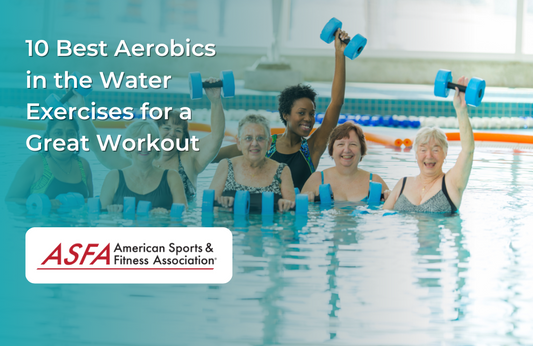Foam rolling and stretching instruction certifications go together as an active part of active recovery. They both are beneficial combined to release tightness and promote a faster recovery time.
There are many different types of stretching techniques. Passive stretching is a technique that involves a manual or mechanical external force, like how a certified physical trainer would assist during physical therapy. This method could also be achieved using a hand held foam roller and pressed directly to the muscle tissue. Resistance stretching is a technique that involves light resistance to get into a deeper stretch. This can be done manually or with exercise bands. Manual stretching is achieved with a trainer or medical assistant and is great for getting into the hip flexors and rotators that are difficult to stretch by yourself.
Foam rolling is great because it not only gets deeper than stretching alone, but it is something that you can do independently from anywhere. If you have aches and pains or tightness that won’t go away, using a foam roller is a great first step to trying to release the tightened muscle fibers. If you have tightness and do not address it, working out on it may aggravate the condition more and could lead to injury. Better to take a day off of your sport to concentrate on stretching and recovery than to be forced to the benches for weeks due to a muscle tear or torn tendon. Foam rolling and stretching can both prevent injury and reduce the amount of recovery time.
Foam Rolling & Stretching Instruction Certifications: The Perfect Pair
In the world of fitness, flexibility and mobility are often overlooked aspects of overall health. But as awareness grows about the importance of these elements in preventing injuries, improving performance, and enhancing daily life, the demand for professionals who specialize in foam rolling and stretching instruction is on the rise. In this article, brought to you by ASFA® (American Sports and Fitness Association), we explore the significance of foam rolling and stretching, and how obtaining certifications in both can help you become a well-rounded fitness expert.
Understanding Foam Rolling
Foam rolling is a form of self-myofascial release (SMR) that involves using a foam roller to apply pressure to specific areas of the body. This technique helps release tension in the fascia, a connective tissue that surrounds muscles and organs. Foam rolling is a valuable tool for:
- Increasing Flexibility: It can improve joint range of motion and muscle length, enhancing overall flexibility.
- Reducing Muscle Tightness: It can alleviate muscle knots, reducing the risk of injuries and improving muscle function.
- Enhancing Recovery: Foam rolling aids in muscle recovery by increasing blood flow and reducing post-exercise soreness.
Importance of Stretching
Stretching is another essential component of maintaining flexibility and mobility. It involves elongating muscle fibers to increase their length and range of motion. Stretching offers various benefits, including:
- Improved Range of Motion: Regular stretching can help increase your joint mobility and flexibility.
- Reduced Muscle Tension: Stretching can alleviate muscle tightness and discomfort.
- Injury Prevention: Flexible muscles and joints are less prone to injuries during physical activities.
Why Foam Rolling and Stretching Instruction Matters
Professional instruction in foam rolling and stretching is vital because:
- Correct Technique: Proper guidance ensures that individuals use foam rollers and perform stretches correctly to maximize their benefits.
- Personalization: Trainers can tailor foam rolling and stretching routines to meet the specific needs and limitations of their clients.
- Injury Prevention: Instruction can help individuals avoid common mistakes that may lead to injuries during foam rolling or stretching.
ASFA® Foam Rolling Certification
ASFA offers a Foam rolling Certification designed to equip fitness professionals with the knowledge and skills to effectively teach foam rolling techniques. This certification covers topics such as foam rolling fundamentals, techniques, and safety guidelines.
ASFA® Stretching Instruction Certification
ASFA also provides a Stretching Instruction Certification focused on teaching proper stretching techniques, guidelines for various types of stretches, and how to develop effective stretching routines.
Benefits of Dual Certification
Obtaining certifications in both Foam rolling and stretching instruction can significantly enhance your fitness career:
- Expertise: Dual certification showcases your expertise in two critical areas of fitness.
- Client Trust: Clients are more likely to trust trainers with specialized knowledge in foam rolling and stretching.
- Diverse Clientele: You can work with a diverse range of clients, including athletes, individuals with specific mobility issues, and those seeking injury prevention.
- Career Opportunities: Many fitness facilities are looking for trainers who can offer comprehensive services that include foam rolling and stretching instruction.
Conclusion
Foam rolling and stretching instruction are valuable components of overall fitness and well-being. By obtaining certifications in both areas, you can position yourself as a well-rounded fitness expert, ready to help clients improve their flexibility, mobility, and overall health. Elevate your fitness career by specializing in foam rolling and stretching with ASFA® today!
Functional movement specialists use foam rolling and stretching to help their clients with increased mobility and joint health. The stretching helps to relieve tight joints and allows them greater flexibility and improved agility.
Youth conditioning specialists use foam rolling and stretching in Kid’s fitness to help keep kids limber and injury free during their sports. Since children are still growing, it is very important not to add any strain to their developing joints and limbs. Foam rolling and active stretching can keep kids healthy and give them a lifelong passion for participation in sports.
Having a certification in stretching instruction and foam rolling make the perfect pair to keep athletes of all ages and all stages healthy and injury free.





